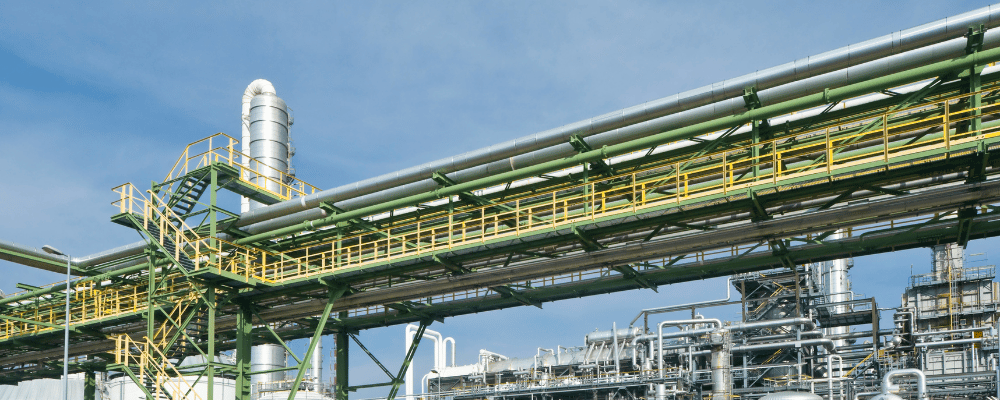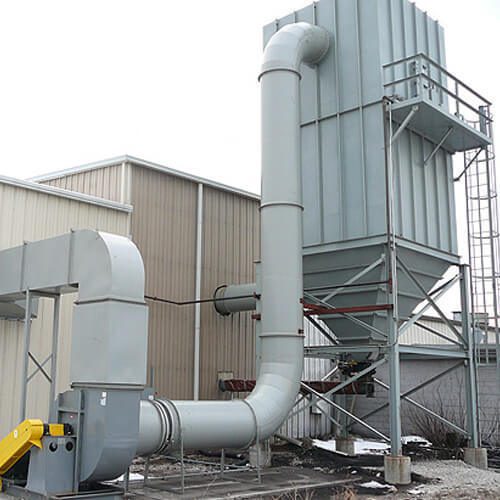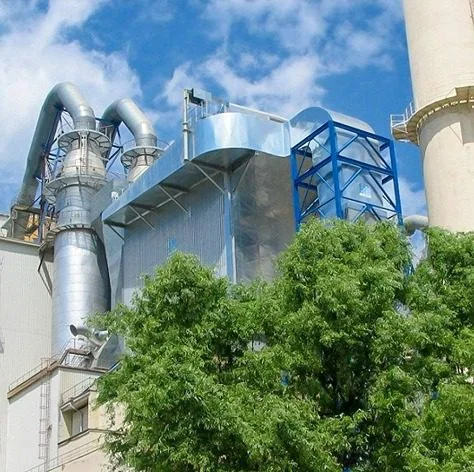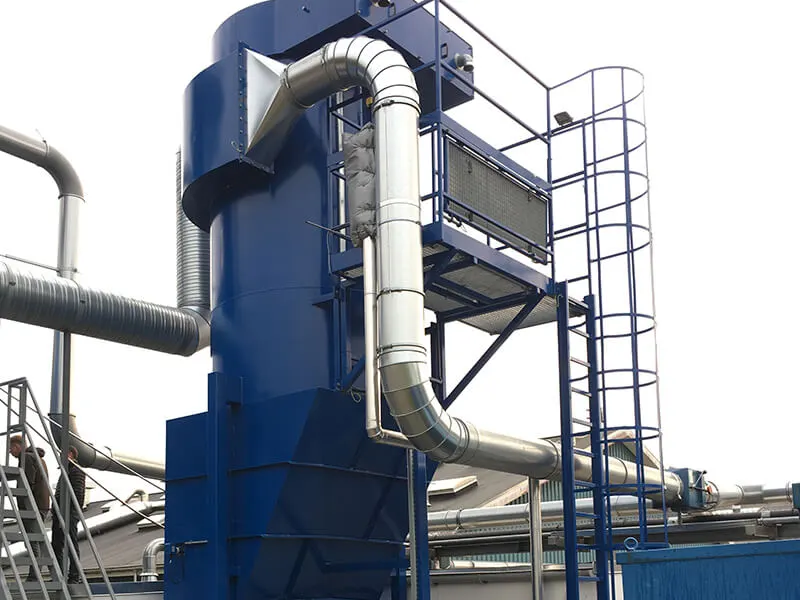The rapid industrialization and energy demands of the modern world have placed immense pressure on the environment, particularly through the release of harmful emissions such as sulfur dioxide (SO₂) and carbon dioxide (CO₂). These gases are byproducts of burning fossil fuels in power plants, industrial facilities, and other combustion processes. Sulfur dioxide is a primary contributor to acid rain, while carbon dioxide is a major greenhouse gas responsible for global warming.
To mitigate these environmental impacts, industries are increasingly turning to technologies such as Flue Gas
Desulphurization (FGD) systems and carbon capture solutions. FGD systems are highly effective at removing sulfur dioxide from exhaust gases, while carbon capture technologies help capture and store CO₂, preventing it from entering the atmosphere. By integrating these two technologies, industries can achieve a dual solution for cleaner air, addressing both local air quality and global climate change challenges simultaneously.

Discover Our Range of Solutions:
Understanding Flue Gas Desulphurization (FGD) Systems
Flue Gas Desulphurization (FGD) systems have long been a critical technology for reducing sulfur dioxide emissions from power plants and industrial facilities. SO₂ is a harmful gas produced during the combustion of sulfur-containing fuels such as coal and oil. When released into the atmosphere, sulfur dioxide can cause severe respiratory issues in humans and contribute to environmental degradation through the formation of acid rain.
FGD systems work by removing sulfur dioxide from the flue gas, typically using a scrubbing process. The most common FGD technology is the wet scrubber, which utilizes an alkaline solution (usually a slurry of limestone or lime) to react with sulfur dioxide in the flue gas and form calcium sulfate (gypsum). This gypsum can then be removed and used in various applications, such as construction materials.
The basic operation of an FGD system involves the following steps:
- Flue Gas Inlet: The flue gas containing sulfur dioxide is directed into the FGD system after combustion.
- Scrubbing Process: The gas is exposed to a scrubbing solution, usually limestone or lime, in an absorber tower or reactor vessel. The alkaline solution reacts with the sulfur dioxide to form gypsum.
- Gas Outlet: The cleaned gas, now free of most sulfur dioxide, is released through the stack.
- Gypsum Removal: The gypsum formed in the reaction is collected and removed, often being reused in the construction industry or disposed of appropriately.
FGD systems are highly efficient, capable of removing over 90% of the sulfur dioxide in flue gas. This technology has been widely adopted in industries such as power generation, cement manufacturing, and oil refining, where sulfur-containing fuels are burned.
The Role of Carbon Capture Technology
While FGD systems effectively control sulfur dioxide emissions, the global challenge of climate change requires industries to also address their carbon dioxide emissions. Carbon capture, utilization, and storage (CCUS) technologies provide a solution for reducing the amount of CO₂ released into the atmosphere from industrial processes.
Carbon capture technology works by capturing CO₂ from flue gas streams before it is emitted into the atmosphere. The captured CO₂ can then be compressed and transported to storage sites or reused in various industrial applications, such as enhanced oil recovery or producing synthetic fuels. The carbon capture process typically involves three stages:
- Capture: CO₂ is separated from the other gases in the flue gas stream. Various capture methods can be used, including pre-combustion capture, post-combustion capture, and oxy-fuel combustion. The most commonly used method in power plants and industrial facilities is post-combustion capture, where the CO₂ is captured after the combustion process, often using amine-based solvents to absorb the gas.
Compression and - Transportation: The captured CO₂ is compressed into a dense, supercritical fluid that can be easily transported through pipelines to storage or utilization sites.
- Storage or Utilization: Once captured, the CO₂ can be stored underground in geological formations (such as depleted oil and gas fields or saline aquifers) or reused in various industrial processes.
The integration of carbon capture technology with FGD systems presents an opportunity to address both local air quality and global climate change simultaneously. By removing sulfur dioxide and capturing carbon dioxide in one system, industries can achieve a comprehensive solution for cleaner air.
The Benefits of Integrating FGD Systems with Carbon Capture Technology
The integration of FGD systems with carbon capture technology offers numerous benefits, including enhanced environmental performance, regulatory compliance, and operational efficiency. Key benefits include:
Comprehensive Emission Reduction
By combining FGD systems with carbon capture, industries can simultaneously reduce both sulfur dioxide and carbon dioxide emissions. This dual approach addresses two of the most pressing environmental issues: local air pollution (due to sulfur dioxide) and global climate change (due to carbon dioxide).
For industries that burn sulfur-containing fuels, the integration of these two technologies ensures that both pollutants are effectively managed, contributing to cleaner air and reduced environmental impact.
Regulatory Compliance
Governments and environmental agencies around the world are imposing increasingly stringent regulations on industrial emissions. Many countries have introduced caps on sulfur dioxide and carbon dioxide emissions to combat air pollution and climate change. By adopting integrated FGD and carbon capture systems, industries can meet these regulatory requirements more effectively.
In regions where carbon pricing or emissions trading schemes are in place, capturing carbon dioxide can also provide economic benefits by allowing companies to sell carbon credits or avoid carbon taxes.
Improved Sustainability
The integration of FGD and carbon capture technologies is a critical step toward achieving sustainable industrial operations. Reducing sulfur dioxide and carbon dioxide emissions contributes to cleaner air, improved public health, and reduced environmental degradation. Moreover, captured CO₂ can be used in various industrial applications, contributing to a circular economy and reducing the overall carbon footprint of industrial processes.
Enhanced Corporate Reputation
Consumers, investors, and stakeholders are increasingly demanding that companies take action to reduce their environmental impact. Industries that adopt integrated FGD and carbon capture systems demonstrate their commitment to sustainability and environmental responsibility, enhancing their corporate reputation and building trust with customers and regulators.
Potential for Carbon Utilization
Captured CO₂ can be reused in various industrial processes, such as enhanced oil recovery, the production of synthetic fuels, and the manufacturing of chemicals and building materials. This opens up opportunities for industries to create new revenue streams while reducing their overall emissions.



Challenges and Considerations in Integrating FGD and Carbon Capture Systems
While the integration of FGD systems with carbon capture technology offers numerous benefits, it also presents several challenges that industries must address:
Cost
Implementing both FGD systems and carbon capture technology can be capital-intensive, requiring significant upfront investment. The cost of operating and maintaining these systems can also be high, particularly in industries where large volumes of gas need to be treated.
To offset these costs, industries may need to explore financial incentives, carbon pricing mechanisms, and other regulatory frameworks that encourage the adoption of emission reduction technologies.
Energy Consumption
Both FGD systems and carbon capture technologies require significant energy inputs to operate effectively. This can result in increased energy consumption and higher operating costs. To address this issue, industries must prioritize energy efficiency and explore ways to optimize the integration of these systems to minimize additional energy requirements.
Technical Integration
Integrating FGD systems with carbon capture technology requires careful technical planning and engineering. Industries must ensure that both systems are compatible and that the integration process does not disrupt ongoing operations or reduce the efficiency of either system.
This may involve retrofitting existing facilities or designing new plants with integrated emission control systems in mind.
Connect with us Now
How Intensiv-Filter Himenviro is Leading the Way
As a leading provider of industrial filtration and emission control solutions, Intensiv-Filter Himenviro is at the forefront of developing advanced technologies for cleaner air. The company specializes in the design, installation, and maintenance of both FGD systems and carbon capture solutions, helping industries reduce their environmental impact and achieve regulatory compliance.
Tailored Solutions for Every Industry
Intensiv-Filter Himenviro recognizes that no two industrial processes are the same. Therefore, the company offers customized FGD and carbon capture systems tailored to the specific needs of each client. Whether it’s a power plant, cement factory, or chemical processing facility, Intensiv-Filter Himenviro works closely with clients to design integrated systems that achieve optimal results.
Expertise in System Integration
One of the key challenges in implementing both FGD and carbon capture systems is ensuring seamless integration into existing operations. With years of experience and technical expertise, Intensiv-Filter Himenviro helps clients navigate the complexities of integrating these technologies, ensuring that systems operate efficiently without disrupting production.
Advanced Monitoring and Control Systems
Intensiv-Filter Himenviro provides state-of-the-art monitoring and control systems that allow industries to track the performance of their FGD and carbon capture systems in real-time. This data-driven approach ensures that emissions are kept within regulatory limits and that both systems are operating at peak efficiency.
Commitment to Sustainability
As environmental regulations become more stringent and industries face growing pressure to reduce their carbon footprint, Intensiv-Filter Himenviro is committed to helping its clients achieve long-term sustainability. By providing integrated solutions that address both sulfur dioxide and carbon dioxide emissions, the company is helping industries transition to cleaner, more sustainable operations.
Conclusion
The integration of Flue Gas Desulphurization (FGD) systems with carbon capture technology represents a powerful solution for industries looking to reduce their environmental impact. By simultaneously removing sulfur dioxide and capturing carbon dioxide, industries can achieve cleaner air, improve regulatory compliance, and enhance sustainability.
Intensiv-Filter Himenviro is at the forefront of this dual solution, offering customized, efficient, and sustainable technologies that help industries meet the challenges of modern environmental regulations. With expertise in system integration, real-time monitoring, and a commitment to sustainability, the company is helping industries achieve cleaner air and a cleaner future.









